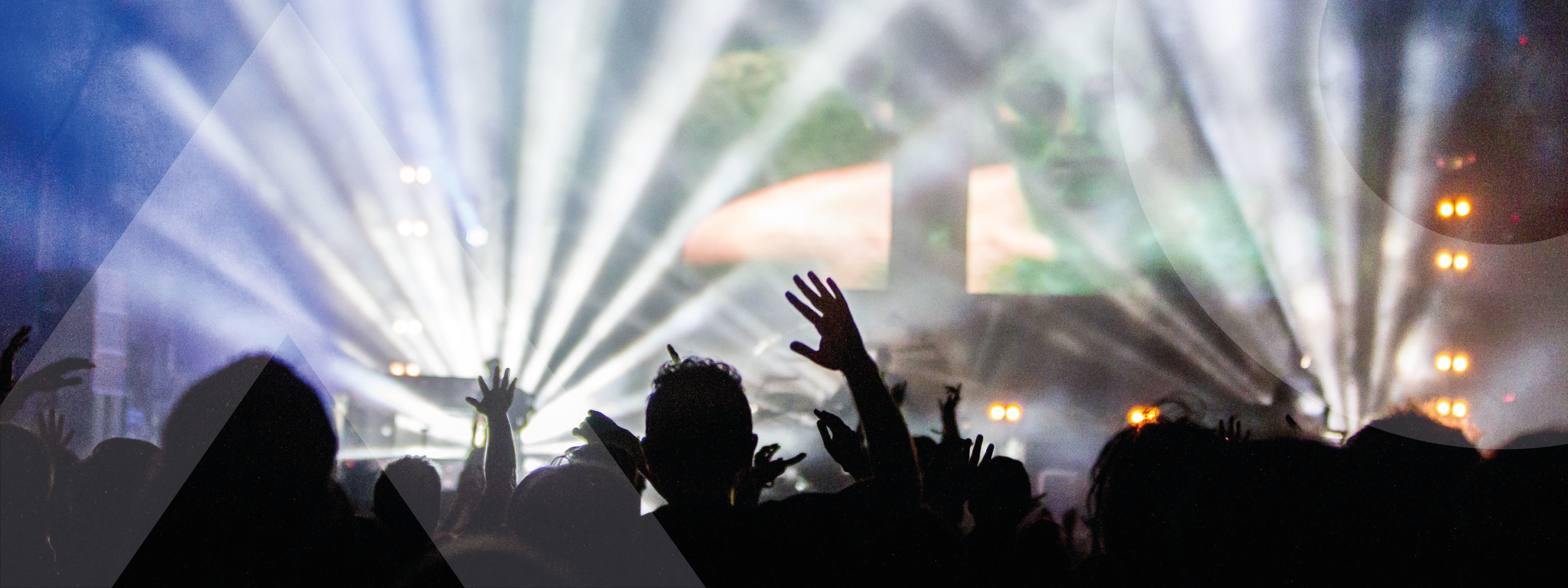Adam Cockfield, Director of Events and Live Experiences at Fuse, says major events operations teams and agencies can learn quickly from the impacts of COVID and adjust to a new reality to deliver safe and enjoyable sports and entertainment events.
As we hit the latest milestone in lockdown easing, Britain’s £84 billion events industry must overcome a series of hurdles to get back on its feet.
Decimated by COVID, a coalition of industry voices launched their #WeCreateExperiences day of action on 30 March to champion the global expertise of organisers in delivering safe events and encourage people to book tickets for sports matches, concerts and experiences. The B2C campaign is backed by celebrities including Claudia Winkelman, Ronan Keating and Jonny Wilkinson.
After a year of staring at screens and digital fatigue, I believe we’ll see an increasing appetite from people desperate to experience a myriad of events and shows. Humans crave social interactions, after all.
Now the industry is challenged to create those experiences in a COVID-secure and meaningful way.
Event owners must contend with huge levels of legislation and mitigations just to allow them to re-open for business. But no one is better placed than the industry to make that happen; the events sector is full of expert planners and problem solvers.
The biggest challenge is financial because a reduction in percentage capacity at venues due to COVID restrictions is not reflected a similar percentage reduction in operating costs. In many cases, costs will actually increase due to the new mitigations in place, such as earlier opening times, testing and temperature issues and additional cleaning needs.
It means many events will operate at a loss or a significantly reduced profit during the initial period of reopening simply to make sure they can give people what they want.
To make that experience as good as possible for fans in attendance, strong communication is key throughout the event experience. This should start from when they buy tickets, to pre-event emails telling visitors what to expect and what they need to do.
You’ve got to know your audience. While using mobile app push notifications and social media messaging will work brilliantly for one sector of the demographic, a different medium will be needed to target a less tech savvy generation.
On the ground communication is even more crucial. Stewards and volunteers need to be fully briefed to proactively engage with crowds and queues, explaining what’s happening and managing expectations on the inevitable additional queues.
For Fuse and other agencies, new challenges for guest management programmes and brand activations are surfacing, as we learn to live with COVID this year and beyond.
Agencies are hugely reliant on event rights holders. Clear communication from them can allow us to plan effectively and communicate those plans to guests. Our plans are robust and cover various COVID-related contingencies – and staff must be ready to react to anything that might happen.
Globally, governments’ shifting messaging about live events has made communication difficult for rights holders. They have been forced to delay announcements to try and maximise capacities in order to optimise revenues.
This has led to late decision-making on events like Euro 2020, already postponed to this summer, the UEFA Champions League Final and the Lions Tour of South Africa. It’s imperative that agencies quickly respond to these last-minute changes and challenges to deliver safe and engaging experiences for guests.
For many brands who activate around major events, the time at the venue – tightly controlled by the rights holder/event owner – is minimal. The different areas we work in (transport, hotels, staffing, events) require independent planning and problem solving. These are now seen through a COVID lense, bringing similar challenges to the rights holders staging events.
At Fuse, we effectively address the challenges because we already operate robust critical incident plans and structures to prepare event staff for all eventualities. COVID has simply become another integrated layer to these plans; it’s not a separate standalone project.
Venues and event organizers have evolved their critical incident management approaches to encompass the challenges of COVID-19. But many agencies preparing brand activations maybe haven’t looked at the pandemic through the events lense as much. A more strategic approach to safety and security is needed to deal with the fall-out from COVID in the months ahead.
There is also an additional risk that, we as an industry, are potentially taking our eye of the ball when it comes to other critical incidents because the sole focus is pushed towards COVID. We also need to be prepared for the next leftfield crisis that comes our way; that’s only possible by having robust plans that can be flexed to meet the demand.
It’s incumbent on brands, agencies and event owners to seriously invest in safety and security – a line in budget you know you can’t just move as it’s an area of critical importance.
It’s often said that war brings about the fastest advances in technology; for most of us, COVID is the closest thing we’ve faced to wartime. People have embraced technology, from family members using Zoom, to businesses becoming reliant on Microsoft Teams, and events turning virtual.
Some incredible virtual events have been held in the past year, providing people with that much needed distraction from pandemic life; a substitute to that gig, show or big sporting event they wanted to experience.
Despite the onset of digital fatigue and craving for real life social interaction, many aspects of virtual events are here to stay and they will certainly complement live events of the future.
Virtual events work brilliantly when there is a central content focus and provide an opportunity to reach a wider audience than just those watching live in the venue.
We can see future conferences, shows and keynotes, which are linked to a brands activation around an event, being integrated in a hybrid way so that the virtual and real life experiences work in parallel.


